My requirement is to find the inclination of the lines (all 8 lines) surrounding the data matrix, as shown in the edge detected image:
The two main restrictions:
- The inclination detected should have precision of at least 0.1 deg (the best achievable in this image)
- Time taken should be less than 30 ms
I am implementing the algo on a Blackfin DSP, and have used Blackfin image processing toolbox.
I tried using Hough transform and Contour detection to find out the lines and thus their inclinations however the time limit exceeds. Any suggestions to use a different algorithm or optimize this one would help.
[for my use case the higher the angle precision the better, I am targeting at least 0.02 - 0.05 with a higher resolution image]

